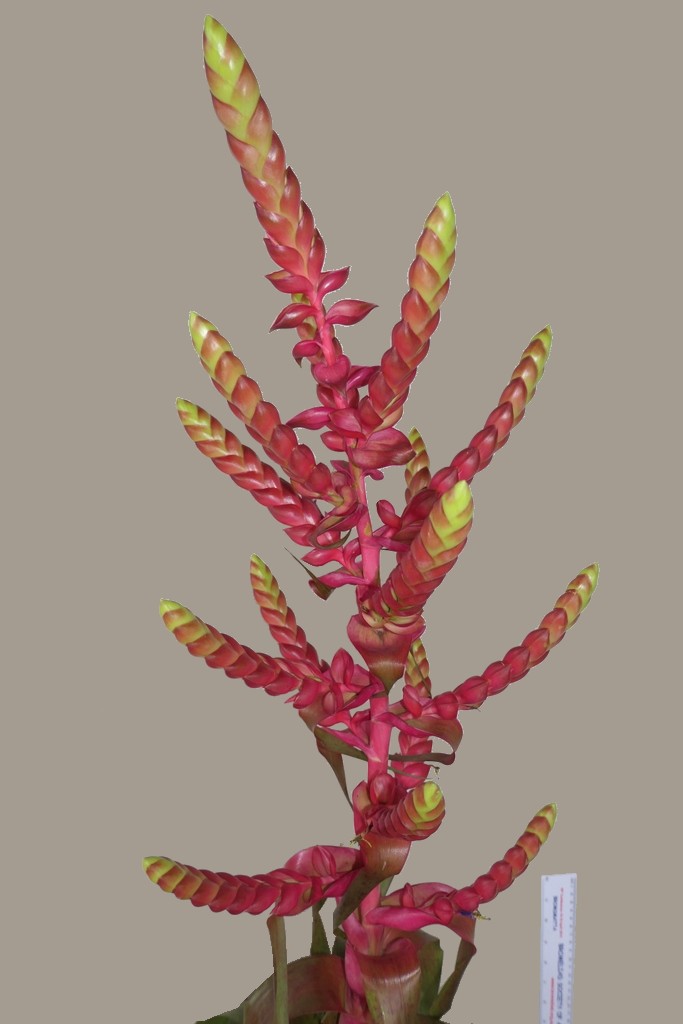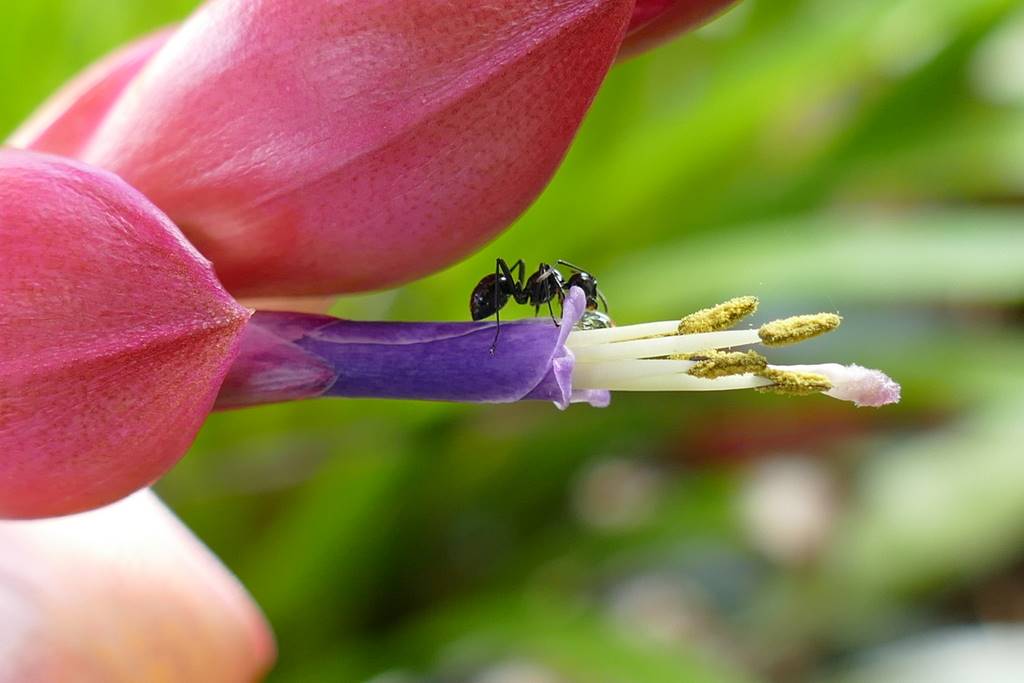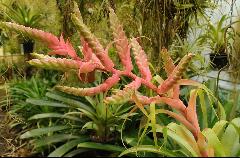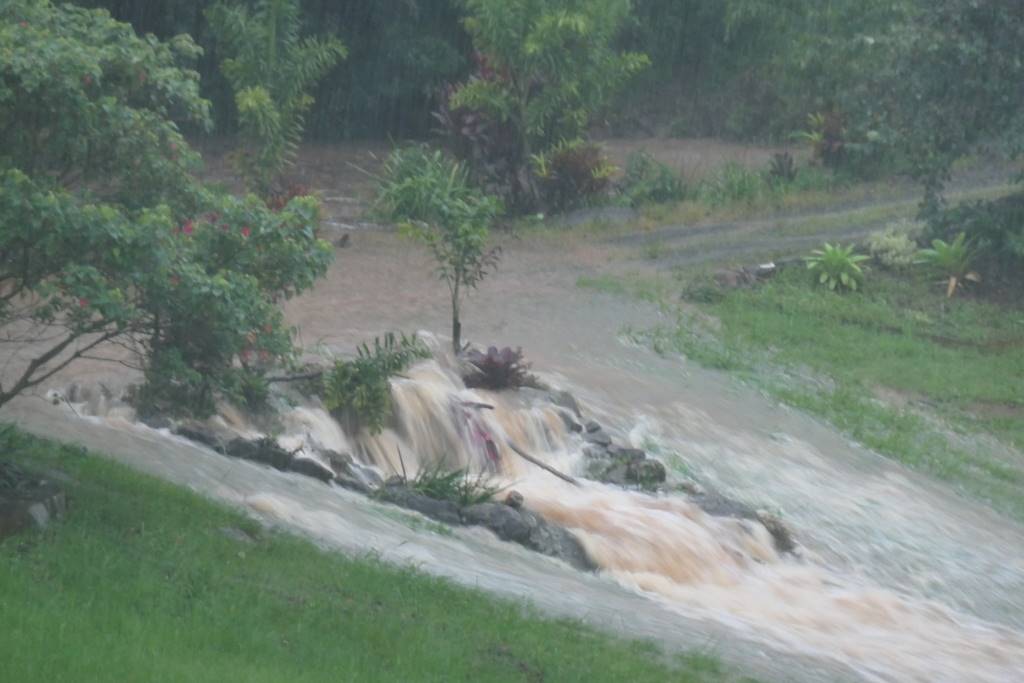






Maurice Kellet advises it's from seed from Alfred Lau in the late 70's but not named with great confidence.
Derek Butcher reminded us of name change and notes...
"I had thought that petal colour would help in identification (green or violet blue) but there is too much confusion here. Harry says that in his opinion where the branches are vertical (flat side at right angles to the axis) you have T. cretacea, or horizontal (flat side to the axis) you have T. mooreana. Armed with this information you see that the plant in Peter's photo covers both, which means the plant does not know if it is Arthur or Martha !
I would suggest this be called T. aff. mooreana (inflata ex Lau.). If we put photos on the Aust. website, others can look up the reference in years to come when they flower that T. inflata from Maurice."
Refer to "Detective Derek" article DD0809 for more details.


NOTE This taxon is difficult to identify in the wild. It shares the same locality and climatic conditions as T. kalmbacheri. The only striking difference is in the colour of the petals where T. kalmbacheri is green and T. mooreana is violet/purple.
3. T. inflata Mez in DC. Monogr. Phaner. IX. (1896) 701.
Desc from Mez 1935
Folia ignota. Scapus validus, ad 0,2 m longus, vaginis perlonge filiformi-acutis, internodia superantibus indutus. Inflorescentia submultiflora, 2-pinnatim panniculata, e spica terminali majore spicisque 3-8 lateralibus minoribus composita, ad 0,4 m longa et 0,25 m diam. metiens; spicis sub¬pinnatis, infimis quam bracteae primariae brevioribus reliquis eas superantibus, saepius ultra 25-floris, subsessilibus, erectis vel suberectis, ad 0,1 m longis et 35 mm latis, linearibus; bracteis primariis vaginis scapalibus isomorphis; bracteis florigeris recurvo-patentibus, sueto nec imbricatia nec axes obtegentibus, dorso glabris et tenuiter prominulo-venosis, valde inflato-concavis nullo modo carinatis, carnose coriaceis, explanatis fere perfecte orbicularibus, apice rotundatis mucroneque tenui permanifesto imposito auctis, ad 30 mm longis, sepala superantibus nec obtegentibus. Flores brevissime pedicellati fere sessiles; sepalis basi ad 3 mm connatis, coriaceis, dorso glabris laevibusque, late ellipticis, acutius¬culis, symmetricis, ad 25 mm longis. Petala ignota:
Mexico: ohne Standortsangabe von Roezl lebend eingesandt, aber nicht in Kultur ubergegangen.
Leaves unknown
Scape robust, to 20cm long, clothed with long filiform sheaths, exceeding the internodes.
Inflorescence many flowered, a bipinnate panicle, from the larger terminal spikes there are 3-8 lateral smaller spikes, to 40cm long and 25cm wide at the middle.
Spikes subpinnate, the lowest ones shorter than the primary bracts, the remainder exceeding them, often more than 25 flowered, subsessile, erect to sub-erect, to 10cm long and 35mm wide, linear.
Primary bracts the same shape as the scape sheaths.
Floral bracts recurved spreading, not imbricate, not concealing the rhachis, the back glabrous and finely prominently veined, strongly inflated concave, in no way carinate, fleshy-leathery, flattened nearly perfect orbicular, tip rounded with a slender mucron, to 3cm long, exceeding the sepals not hiding them.
Flowers with the smallest pedicel, almost sessile
Sepals connate for 3mm, leathery, back glabrous, smooth, broad-elliptic, becoming acute, symmetric, to 25mm long
Petals unknown
Mexico: without location from Roezl as a living specimen, but not grown on in culture.
Luther 2002 suggests that T. inflata should be a synonym of T. cretacea which indicates that the type for T. mooreana should be Moore and Wood 4704 !
| photo/herb/drawing | Place | State | Coll.No | Petal Blue or Green | Puffy fb Yes/No |
| D | . | . | Kohres 1985 | . | N |
| P | . | EM001901 | B | . | |
| P | Compostela- Tepic | Nayarit | EM001801 | B | . |
| . | Motosindla | Chiapas | Wulfinghoff | B | Y |
| . | . | Chihuahua | Knobloch 564(cretacea) | B | N |
| H | La Palmita | Durango | Koide | . | Y |
| . | Acahuizotla | Guerrero | . | . | . |
| P | Altimirano | Guerrero | (trauneri) | . | N |
| P | Chilpancingo | Guerrero | EM002901 | G | Y |
| P | Filo de Caballo | Guerrero | EM992001 | G | . |
| H | Rincon de la Via | Guerrero | Kruse 3319 (kalmbacheri) | G | Y |
| P | Salitrero- Altimirano | Guerrero | EM911310 | G | Y |
| P | El Tuito | Jalisco | EM81317 | B | Y |
| P | Tecaltitlan | Jalisco | EM871705 | G | . |
| H | . | MEXICO | Roezl 1873 (inflata) | ? | N |
| P | Zihuatenejo | Michoacan | LH15069 | G | Y |
| P | Pocutla-Miahuatlan | Oaxaca | EM912102 | G | . |
| P | San Gabriel | Oaxaca | EM011903 | G | Y |
| H | Sierra Charuco | Sonora | Gentry | B | N |
| P | Monte Escobedo | Zacatecas | Lau | B | . |
| P | Sierra de Cora | Zavatecas | EM001302 | B | Y |